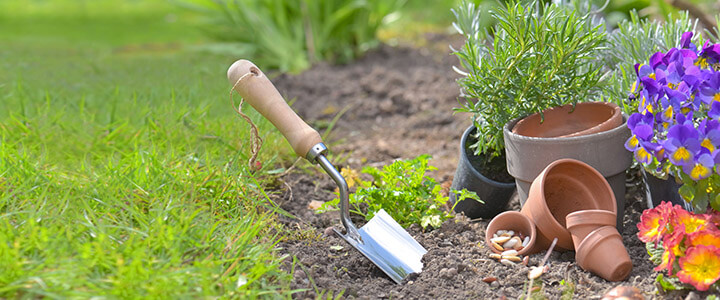Five Environmentally-Aware Gardening Tips
A garden is a lovely little pocket of green. A place to reconnect with Mother Earth, and to remind ourselves that we’re part of nature, not separate to it.
If you enjoy spending time outside, chances are you’re attuned to the need to go green. In our modern world, the balance between humans and nature is shifting in an ever-more perilous way. It’s easy to feel helpless. But in your garden, there are a few sure-fire ways to put the power back in your hands. Here are five tips from upgardener.co.uk.
Invite pollinators
Bees and other pollinators are literally our life-force. These friendly critters spend their lives collecting pollen from plants and distributing it to others, assisting the ongoing growth of future generations, and providing us with the food and beauty we need to survive.
By prioritising plants that attract pollinators, you can make your garden a safe haven for these little helpers. In the UK this includes plants like hollyhock, blueberry, or butterfly bush – no points for guessing what this attracts! – and many more. The RHS maintain a list of pollinator-friendly plants which is great for inspiration.
Make a compost pile
In the UK we waste millions of tonnes of food, causing untold damage to the environment. Making a compost pile is a great way to counteract this wastage, even only on a small scale.
You can either scrape your organic waste into a cold compost bin and leave it to sort itself out or maintain a hot compost pile. By turning hot compost manually every couple of days, you promote aerobic decomposition and speed up the whole process.
Ask friends, family, and neighbours to save their scraps for your pile, and you can intercept even more food from going to the trash.
Use crop rotation
If you’re growing fruits and veggies in your garden, get yourself familiar with crop rotation. Scientific American reports that Earth’s soils only have 60 harvests left if soil degradation continues. Again, your garden is only a drop in the bucket of global soil degradation, but it’s an empowering way to help out and spread the word.
Different plants take different ratios of nutrients from the soil they grow in, meaning that if you repeatedly grow the same crop in the same plot, the soil will become deficient in certain nutrients. By rotating the crops you grow in a way that alternates the nutrients drained, you give the soil a chance to replenish itself naturally. Over time this means less degradation and healthier crops – win-win!
Collect rainwater
A hosepipe is convenient, but they also use a lot of water. And a lot of the water that falls – for free – from the sky ends up watering parts of your garden that don’t really need it.
By placing a water butt in your garden to collect rainwater, you give yourself the chance to save on water usage from your hose. Simply fill up a watering can and get to work watering the plants as and when they need it. If you’re feeling particularly industrious, you can set up drainage from the roof of your house, garage, shed, or whatever else and increase the amount of water collected.
Obviously your mileage will vary depending on the average rainfall where you live. And again: This technique won’t offset the enormous amounts of water wasted from ageing infrastructure or industrial use, but it’s a nice way to make your garden that little bit greener.
Plant a tree
There’s a proverb that says “a society grows great when old men plant trees whose shade they know they shall never sit in.” If you plant a tree in your garden, chances are you may never see it reach its full size. But people will in the future, and you’ll get to enjoy watching it grow.
Sitting in the shade of a tree someone else planted is a way to connect with them across time. It’s a way to be grateful to nature and to acknowledge everything it offers us.
Oh, and while the tree is growing it will absorb thousands of grams of carbon dioxide from the atmosphere. Another win-win!



















